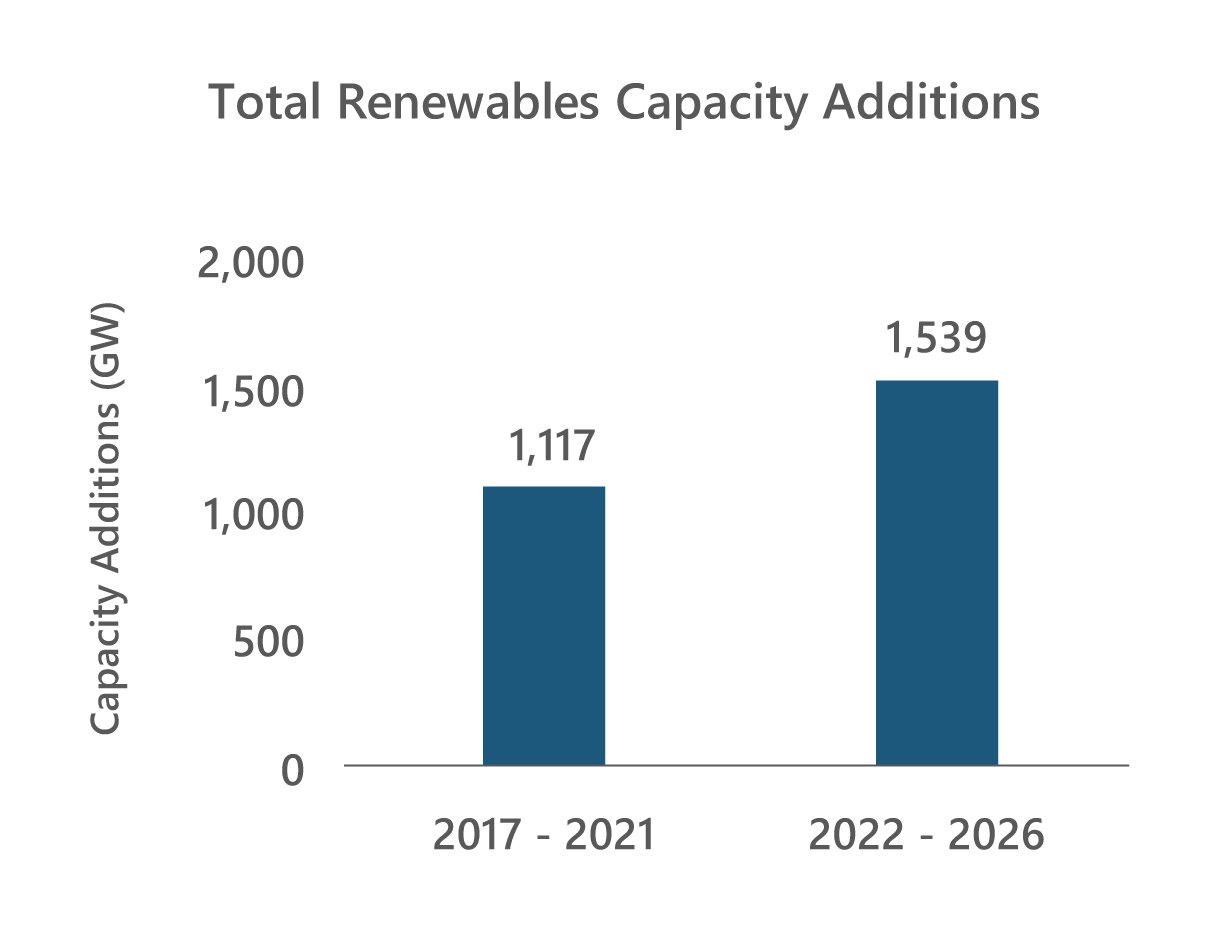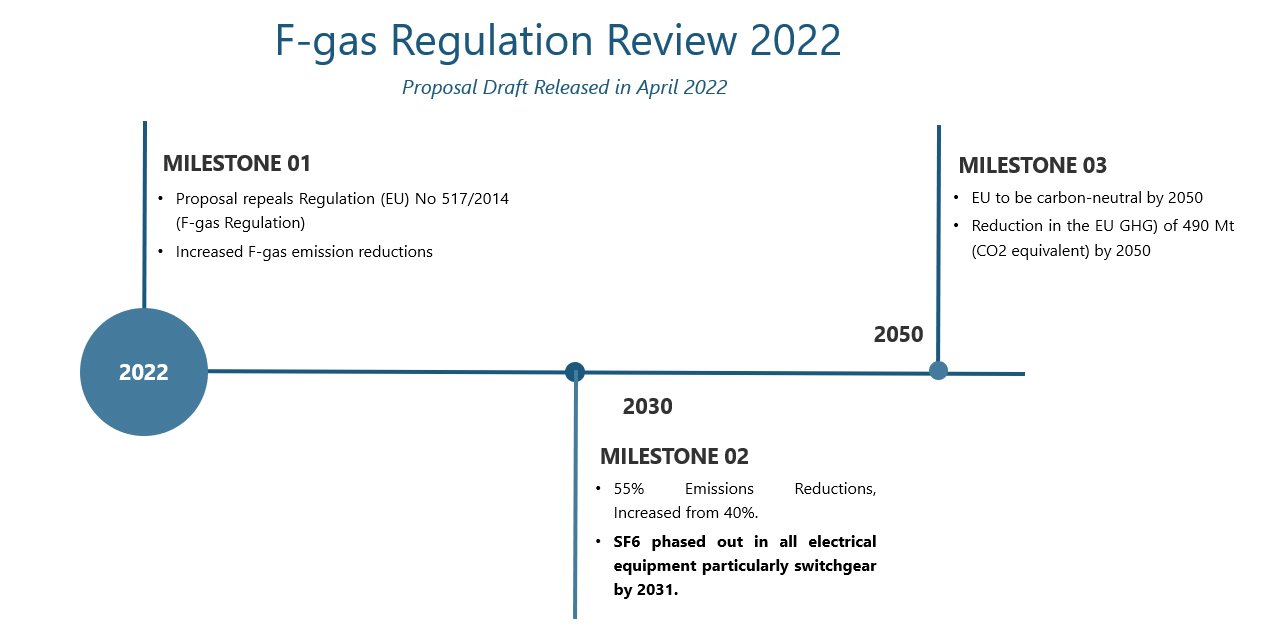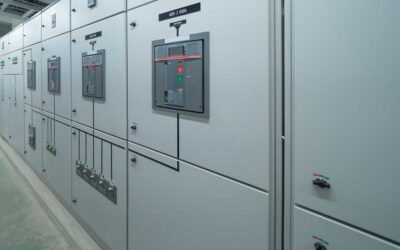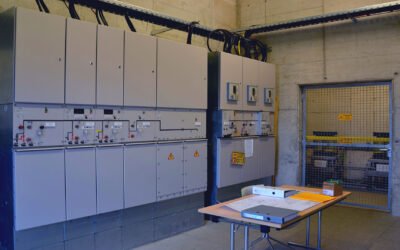- Following the landmark Paris Agreement in 2015, governments across the globe set renewable energy targets to combat climate change.
- SF6 is a potent greenhouse gas, with a global warming potential that is 25,200 times higher than CO2.
- If the usage of SF₆ in MV switchgear is not curtailed in the near future, the electrical industry- already the largest consumer of SF₆- could become the largest emitter in the years to come.
Following the landmark , governments across the globe set renewable energy targets to combat climate change. The electrical industry, a major contributor to greenhouse gas emissions, is also participating in the global emissions reduction drive and pushing for the integration of renewables with the electricity grid. This is expected to curtail the detrimental impact of conventional fossil fuel-based electricity generation on the environment. According to the International Energy Agency, in 2021 alone, 295 GW of new renewable capacity was installed globally, despite challenges associated with supply chain disruptions, delays in construction, and spikes in the prices of materials.

Figure 1: Renewable capacity additions (only solar and wind) from 2017-2026.
Source: International Energy Agency
Usage of SF₆-based Switchgear in the Renewable Sector
According to Power Technology Research, the annual sales of MV switchgear in 2021 stood at around USD 20 Billion, while 52% of the units sold were GIS. Out of these 52%-unit sales, 20% came from the renewable sector. Within renewables, 70% of the switchgear that was used was GIS.

Figure 2: MV switchgear technology split – renewables in 2021.
Source: Power Technology Research
Due to the excellent dielectric properties of SF6, which not only lead to reduction in the size of electrical equipment but also minimize the use of resources such as land and material, GIS across the globe have been utilizing it since the 1960s. Despite its uses, however, SF6 is a potent greenhouse gas, with a global warming potential that is 25,200 times higher than CO2.

Figure 3: Review of F-gas regulation in 2022.
Source: Power Technology Research
SF₆ Emissions from the Renewable Sector
As per the forecasts of Power Technology Research, MV switchgear sales are expected to increase as all major countries across the globe are pushing to achieve their renewable generation capacity targets. The annual market for GIS-based MV switchgear in renewables is forecasted to grow with a CAGR of around 5%, on average, globally from 2021 to2027. Consequently, the share of SF6 emissions from MV switchgear in the renewable sector will also increase. Thus, steep growth in the renewable sector, coupled with the continuous demand for compact MV switchgear in wind power make promoting the use of SF₆-free switchgear in the renewable sector a logical choice.
Possibility of the Renewable Sector Moving Towards Green Switchgear
During the review of the F-gas regulation (EU) No 517/2015 in 2022, the European Union proposed a ban on the usage of SF6 in electrical equipment by 2031. It is of note that around 85% of all the SF6 produced is used in the electric power industry and 90% of electrical equipment that utilizes SF6 is switchgear. Switchgear manufacturers are rapidly moving to develop alternative solutions to SF6 since the promulgation of EU’s F-gas regulation from 2015.
The renewable sector’s ability to transition towards green switchgear will largely depend on if the EU goes ahead with the ban on the usage of F-gas in the electrical equipment as suggested in the proposal draft. It would also depend on how fast major market players in the global switchgear industry come up with a wide range of products in the switchgear category, especially in the high voltage range.
Looking Ahead
If the usage of SF₆ in MV switchgear is not curtailed in the near future, the electrical industry- already the largest consumer of SF₆- could become the largest emitter in the years to come. This is owing to the extended lifetime of switchgear; every unit installed in 2021 can potentially still be in operation in 2060. Overall, eyes are on the EU for the 2022 revision of the F-gas regulation, which would be a major factor in enforcing SF₆ alternatives, in addition to indirectly channeling private investments for further research and development in this regard. Renewables are a key driver for capacity additions in the switchgear category, even though they currently have a small installed base. The renewable sector will be the first to transition to SF₆-free alternatives, as this sector is keen on reducing GHG emissions and open to new technologies as compared to other application verticals.
High Voltage Switchgear Service Overview
The research presented in this article is from PTR's High Voltage Switchgear service. For information about this service please submit a request shown below.
Contact Sales:
Europe
+49-89-12250950
Americas
+1 408-604-0522
Japan
+81-80-7808-1378
GCC/Rest of APAC
+971-58-1602441
More about our:
High Voltage Switchgear Market Research
Recent Insights
Sustainability Across Sectors: Highlights from GreenTech Festival 2024
Recently, I had the privilege to attend and present at the Greentech Festival, an excellent event in the realm of sustainability. This influential...
Charting the Course: China and India Lead APAC’s MV Switchgear Market
The infographic offers a comprehensive overview of the medium voltage (MV) switchgear markets in China and India, encompassing switchgear ranging...
Transitioning to SF6-Free Switchgear: A Timely Shift for the Middle East Market
The infographic advocates for the Middle East (ME) to transition to SF6-free gas-insulated switchgear (GIS). The Middle East region is expected to...


